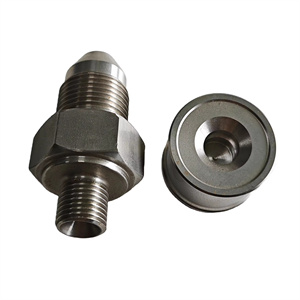The main purposes of precision turned parts for black oxidation treatment are as follows:
Improving corrosion resistance:
Black oxidation treatment will form a dense oxide film on the surface of Precision Turned Parts, mainly ferric oxide (Fe2O3). This oxide film can effectively isolate air and water, prevent further oxidation of internal metals, and improve the corrosion resistance of the parts.
Enhanced wear resistance:
The formed oxide film is usually relatively hard, which can reduce the wear on the surface of Precision Turned Parts and extend the service life of the parts. This treatment is particularly suitable for parts with high requirements for wear resistance.
Improving appearance:
The surface of the parts treated with black oxidation presents a uniform black or dark gray color, improving the visual effect of Precision Turned Parts and enhancing the overall aesthetics. In certain applications, such as decorations or products with high appearance requirements, this is particularly important.
Reduce light reflection:
Black or dark gray surfaces can significantly reduce light reflection, reduce light pollution, and are particularly useful in situations where light reflection needs to be reduced (such as military equipment, optical instruments, etc.).
Concealment and identification:
In some special cases, black oxidation treatment can be used to conceal the true material or purpose of Precision Turned Parts, or for specific identification purposes.
Improve surface hardness:
Although the hardness of the black oxide layer itself is not very high, it can serve as a protective layer to reduce direct external wear on the substrate, thereby indirectly improving the surface hardness of Precision Turned Parts.
Increasing the added value of parts: Precision turning parts that have undergone blackening treatment have improved their performance and appearance, thereby increasing the market competitiveness and added value of the product.
Improving product quality stability: Blackening treatment can provide a relatively stable protective layer, reduce performance changes of parts during use, and ensure consistency in product quality.
In practical applications, such as precision instrument manufacturing, some precision shaft parts undergo blackening treatment, which can not only improve their corrosion resistance in complex environments, but also coordinate their appearance with the overall style of the instrument. In mechanical transmission systems, blackening treatment of key gear shafts can help improve their wear resistance and service life.
